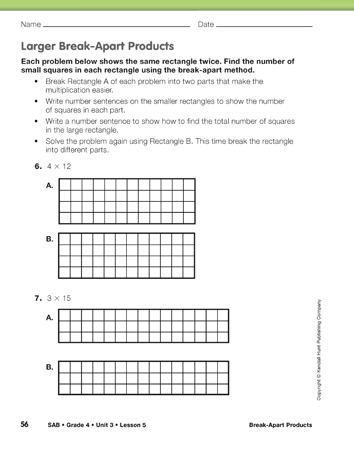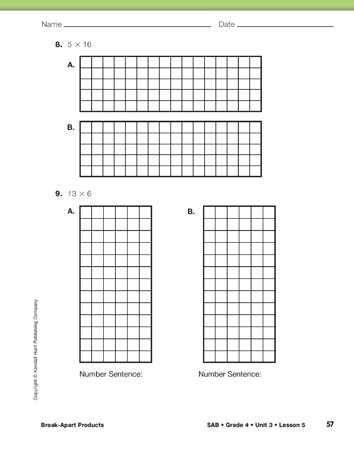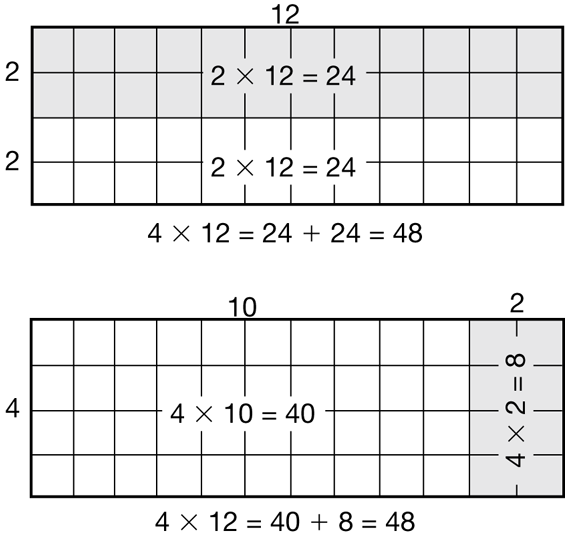Break-Apart Products
Est. Class Sessions: 2Developing the Lesson
Part 2. Exploring Larger Break-Apart Products
Ask students to work in pairs to solve Question 6 on the Exploring Break-Apart Products pages in the Student Activity Book. Display Questions 6 and 7 for the class. As students work, encourage them to look for ways to break the rectangles apart so that both the multiplication and addition are easy to do. Sample responses are shown in Figure 2.
For example, ask student pairs:
Discuss students' strategies for Question 6 with the class. Then, ask students to complete the remaining problems with their partners (Questions 8–9).














